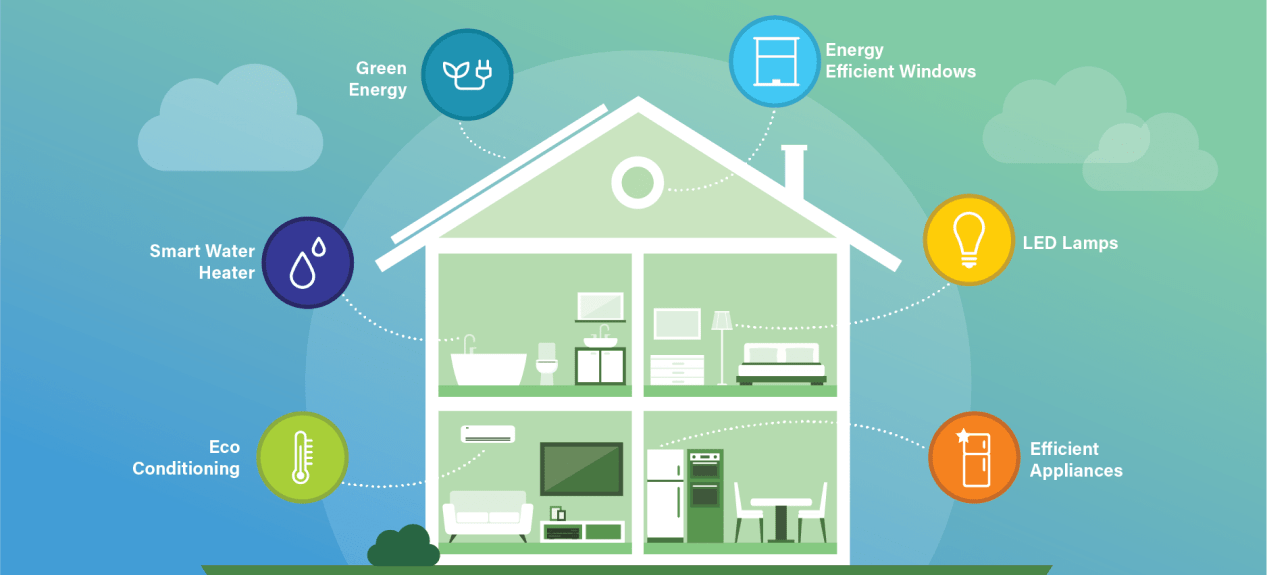

A net-zero ready home with pre-installed solar benefits both builders and buyers
A wine cellar and white picket fence are features of the old American Dream. Today’s homeowner yearns for sustainable design that doesn’t compromise quality and smart technology to keep monthly bills low without sacrificing comfort.
This is no secret to homebuilders, who’ve been constructing energy-efficient homes for years. But now, with the passing of the Inflation Reduction Act (IRA), building high-efficiency dwellings above code is not only a perk for the planet, it’s also a boon to a homebuilder’s bottom line.
Rising Interest Rates Require Builders to Better Differentiate

For more than 15 years, builders have been rewarded for building energy-efficient homes with the IRS code Section 45L tax credit.
The credit provided single-family and multi-family homebuilders with $2,000 (per unit) for meeting a certain level of efficiency measures. That credit was due to expire at the end of 2021, leaving builders in limbo.
While the housing market remained fiercely competitive throughout the first half of 2022, inflation began soaring by summer, and the Federal Reserve raised interest rates. Following the hike, mortgage rates in the U.S. hit a 20-year high by fall, topping 7% by fall* before falling slightly over the next few months.
By spring 2023, the average rate on a 30-year fixed mortgage jumped back over 7%, leaving builders in search of ways to differentiate their homes*, as buyers seek long-term savings. That’s where an extended Section 45L credit comes in.
How the Inflation Reduction Act (IRA) Benefits Buyers and Builders Alike

Signed into law in August 2022, the IRA impacts the construction industry by extending green home building tax incentives for new construction, as well as property improvements. The 45L home tax credit was extended retroactively (at $2,000) to the beginning of 2022.
On January 1, 2023 the tax credit increased to $2,500 for meeting the ENERGY STAR® standards and $5,000 for meeting zero energy-ready home (ZERH) requirements.*
So, what does this mean for builders? If you ask, many will tell you they want to bridge the gap between ENERGY STAR® certification and net-zero ready, but the cost is a deterrent. The difference between constructing a high-efficiency dwelling and preparing a home for solar panels, maximizing hot water efficiency, modifying ductwork and more to achieve net-zero ready status can add up fast.
Arcxis (formerly DPIS Builder Services) is a leading provider of HERS inspections and EnergyStar ratings. The company also works with homebuilders who want to build above‐code.

Greg Cobb, president of the Western Region at Arcxis,
explains how the cost to get from ENERGY STAR® to net-zero differs widely across the nation:
“It’s a sliding scale of how efficiently homes are built, often from West to East. For example, the cost to get to net-zero ready in Atlanta versus Phoenix is high because homes in a hot desert climate are designed to withstand heat with high ceilings and good air ventilation."
If it costs more than the $5,000 zero energy credit, the economics wouldn’t make sense (likely the case in Atlanta). But in many areas where energy-efficient homes are the norm, Section 45L could be the difference between a home that sells for the asking price and a heated bidding war.
Even if the cost to upgrade to zero energy ready is fairly equal to the 45L credit, there are other advantages. As interest rates rise and the housing market begins to slow, it’s becoming more important to stand out.
With a net-zero ready home, builders can often tout higher-quality materials, utility bill savings through an efficient design, and a house set up for solar panels.
Better yet, a builder can have the solar system pre-installed.
Go a Step Beyond with Pre-Installed Solar

At Sunnova, we partner with homebuilders across the nation to facilitate the development of solar communities. If you’re a builder wanting to go that extra mile to become net-zero ready, we can take you across the finish line with rooftop solar panels already installed when a home goes to market.
While solar is a requirement on new homes built in California, rooftop panels are an appealing selling point in other states — and a key differentiator as interest rates rise.
Don’t just take our word for it: In May of 2022, Consumer Affairs polled homeowners nationwide about their views on (and experiences with) solar panels. Their survey* discovered:
- Roughly 70% of homeowners reported a ‘substantial increase’ in their home value after installation.
- Three out of four said they wouldn’t buy their next home without either solar or another eco-friendly feature.
- Homeowners were willing to spend an average of $2,600 over budget for a home pre-installed with solar.
For builders wondering if panels will be well received, many people will forego an unobstructed rooftop for greater energy security, potentially lower electric bills and even receive a 30% tax credit if a homeowner owns his or her system at closing.*
That’s right — the IRA also extended the federal solar tax credit for homeowners who own their solar system. The Investment Tax Credit (ITC) jumped from 26% to 30%, effective for 10 years. Offering this federal tax credit to homeowners is another way builders can gain an edge in the increasingly competitive real estate market (yes, the credit will be retroactively applied for all systems installed in 2022).
Paying it Forward with Energy Savings

An energy-efficient home needs less energy to operate every year. This means, in order to offset your home’s energy consumption with solar, a homeowner wouldn’t need as many panels. For a pre-installed system, the clean energy those rooftop panels produced would go further — it could even be stored in a solar battery and used once the sun sets or during a grid interruption.
A net-zero ready home with pre-installed solar benefits enables homebuilders to grow their business while offering houses buyers want.
Take advantage of the 45L tax credit
and learn how you can boost your bottom line with Sunnova New Homes.







